Making minudaru, Okinawa’s super simple jet-black pork【SoraKitchen】
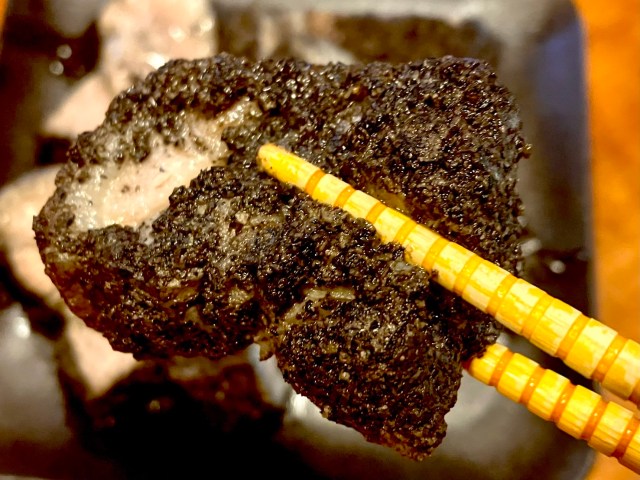
Its mysterious outer coating is not burned but simply incorporates one special ingredient.
As someone who lives on Japan’s main island of Honshu, our Japanese-language reporter and resident foodie Udonko is often intrigued by the regional and vastly different cuisines found throughout Japan. Nowhere is the local food scene more captivating for her than in Okinawa Prefecture to the south, with its blend of indigenous and foreign gastronomic influences. In fact, the latest Okinawan dish to cause her to do a double take is minudaru, or pork loin that’s been coated in a special black sauce and steamed. Udonko was startled the first time she saw a picture of this dish because its jet-black color led her to think that the meat was burned to a crisp, or perhaps coated in nori seaweed. But it was neither of those things, and she soon realized that making it at home didn’t seem all that difficult. She was so curious about how this dish with its unusual color would taste that she decided to make it for herself.
The first step was to prepare the sauce. Luckily, the recipe didn’t call for any niche Okinawan seasonings or foodstuffs, but only ingredients used in standard Japanese cooking. To be precise, she blended equal parts soy sauce and mirin (a sweet cooking rice wine) along with a smaller amount of sugar.
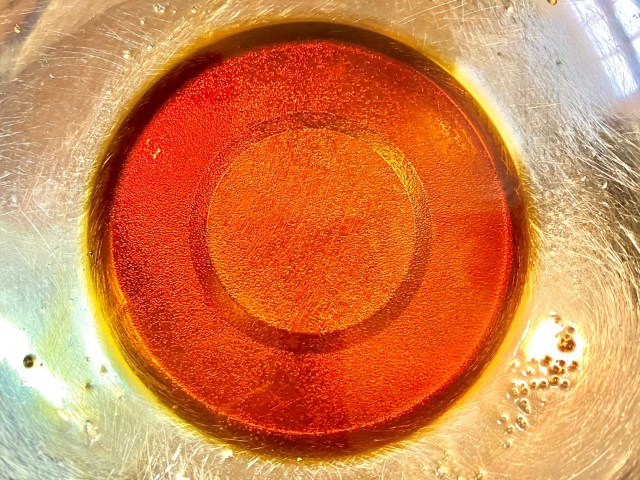
She then let the sliced pork loin marinate in the mixture for about 30 minutes.

The next step was to coat the loin in the special ingredient that gave it its distinctive color: roasted and ground black sesame seeds. She enjoyed seeing the dish take shape as the meat picked up the crushed seeds.

Finally, all she had to do was steam the whole thing (in her fancy French steamer, nonetheless).
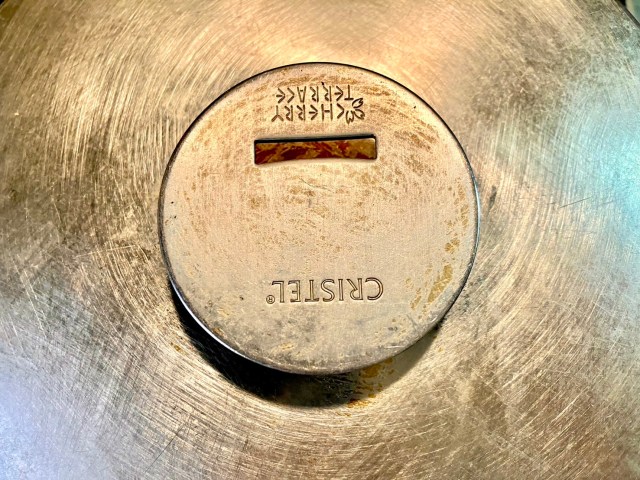
When finished, she placed the pork on a plate to admire her work. Tada!
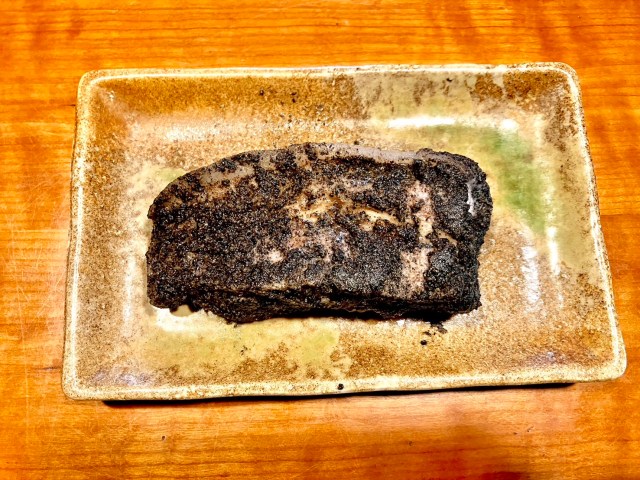
Once again, this is not scorched meat. It looked exactly the way it should.
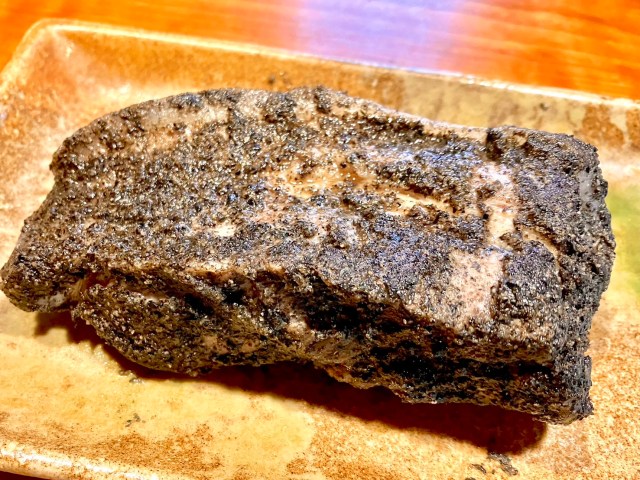
Udonko prepped herself for her first bite of minudaru ever.

Perhaps it was because she only let the meat marinate for the bare minimum time, but the inside tasted like regular juicy pork. Thanks to the rich sesame seed outer coating, however, she didn’t feel like like anything was lacking, especially when both parts were in the same bite. It was also pleasantly filling.
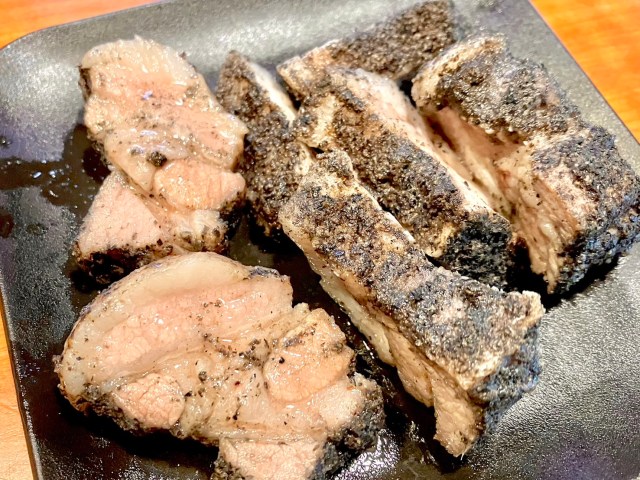
She could see why this is known as a popular dish among children in Okinawa. It had a gentle flavor in contrast to its striking outer appearance.

In all all, the minudaru was a big success. Udonko could see herself making it a second, third, and several more times. It was simple, didn’t take long to prep, and could be easily made anywhere in the country.
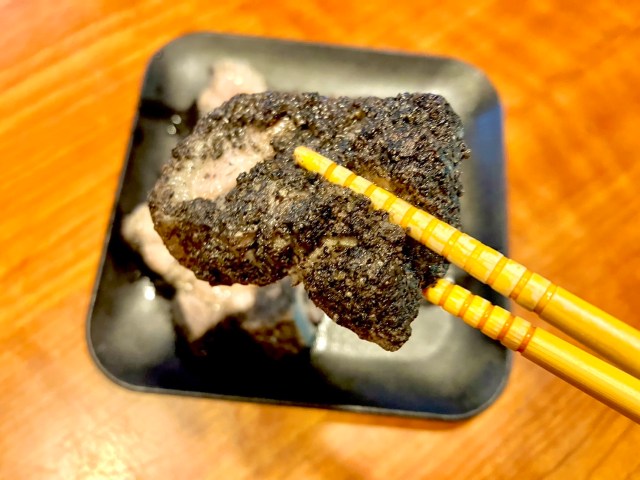
While Udonko followed this recipe from Okinawan cooking site Okireshi, you can view this recipe for minudaru in English courtesy of Japan’s Ministry of Agriculture, Forestry, and Fisheries. The two recipes are extremely similar, but while the Japanese recipe had Udonko marinate the pork loin in the sauce mixture before adding the ground sesame seeds, the one in English has you add it to the sauce right from the start.
Udonko can’t wait to try authentic minudaru the next time she’s in Okinawa. In the meantime, she might have to stave off other Okinawan food cravings by stopping by Tokyo Station for one of these epic pork tamago (egg) onigiri.
All images © SoraNews24
● Want to hear about SoraNews24’s latest articles as soon as they’re published? Follow us on Facebook and Twitter!
Credit:

0 comments: